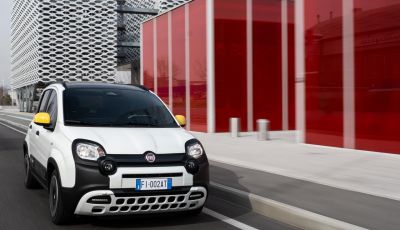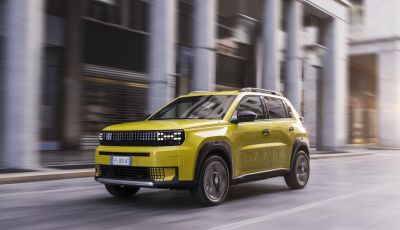Mitsubishi Lancer EVO FQ-360

Mitsubishi Motors UK has unveiled a new and more powerful version of the iconic Lancer Evolution IX supercar. A development of the FQ-340, the new FQ-360 features a 366bhp version of Mitsubishi’s 2.0-litre turbo engine. Available to order now, priced at £35,504, it reaffirms the ‘Evo’s’ reputation as the everyday supercar, offering pace and practicality at an affordable price.
Making its debut at the British Motor Show, the new FQ-360 joins a three car Lancer Evolution line-up, consisting of the FQ-300, the FQ-320 and the FQ-340, all of which continue. Orders can be placed at any Mitsubishi Ralliart dealer with first deliveries expected in September.
Model range Mitsubishi Lancer Evolution IX FQ-300: £28,039 Mitsubishi Lancer Evolution IX FQ-320: £30,039 Mitsubishi Lancer Evolution IX FQ-340: £33,039 Mitsubishi Lancer Evolution IX FQ-360: £35,504
The FQ-360 has been developed by engineers from Mitsubishi UK’s motor sport and performance division, Ralliart, which was also responsible for the limited edition FQ-400. Launched in 2004, the FQ-400 was the fastest-ever production Mitsubishi and the new FQ-360 shares some of its key components.
Mitsubishi’s engineers sought to improve the performance of the 1997cc 4-cylinder 4G63 twin scroll turbo engine with the introduction of a high pressure fuel pump and a high-flow catalytic converter, both of which were employed in the FQ-400. The Engine Control Unit (ECU) has been fully reprogrammed to create a car that delivers 366bhp at 6887rpm and 363lb ft of torque at a lowly 3200rpm.
The torque output is the key to this car’s character. The peak output of 363lb ft is 8lb ft more than the FQ-400 produced and is delivered 2200rpm lower down the rev range. It’s also 18lb ft more than the FQ-340. “We’ve worked hard to optimise the FQ-360’s driveability,” says Paul Brigden, general manager, Ralliart. “We wanted to deliver the best possible driving experience, rather than concentrating on a headline-grabbing power output.”
The FQ-360 may have been tuned for driveability, but that doesn’t mean that its supercar-bashing performance has been compromised. This car will sprint from 0-60mph in an estimated 4.1sec and top 160mph. These figures underline Lancer Evolution’s reputation as the supercar bargain. By comparison, the Porsche 911 Carrera 4S, which costs almost twice as much, takes 0.7sec longer to reach 60mph from rest.
Subtle exterior enhancements differentiate the FQ-360 from the rest of the Lancer Evolution range and improve its aerodynamic efficiency at high speed. One of the most obvious changes is the introduction of a carbon fibre front lip spoiler, which is attached to the front apron and provides additional downforce. At the rear, a carbon fibre ‘sharks tooth’ rear vortex generator helps to reduce aerodynamic lift.
Keen ‘Evo spotters’ will also note the introduction of a bespoke set of alloy wheels. Developed by Speedline, they mimic the five-spoke design of Mitsubishi’s tarmac-spec rally car and are not available as an aftermarket option. The new alloys are shod with Yokohama ADVAN AO46 235/45ZR17 tyres, which are shared with the rest of the Lancer Evolution range.
The interior of the FQ-360 builds on that of the FQ-340 with one notable addition, the space below the stereo – which is used for oddments storage in the FQ-340 – is now occupied by a Ralliart Sports Meter Kit. Three dials display the battery voltage, oil temperature and boost pressure, providing extra, useful information to the enthusiastic driver.
Fears that the FQ-360 would be a stripped-out road racer can also be allayed. Its comprehensive specification includes climate control, all-round electric windows and electrically adjustable mirrors, a category 1 alarm and four airbags, proving that performance and comfort can go hand-in-hand.
The FQ-360’s suspension steering is unchanged from the standard Evolution IX. The Evolution IX’s Brembo brakes are also more than capable of coping with the increase in performance. The 17in ventilated discs with four piston callipers at the front and 16in ventilated discs with two-piston callipers at the rear are supplemented by Sports ABS and Electronic Brake force Distribution (EBD). EBD automatically regulates the front and rear braking force to match the vehicle load and driving conditions.



















